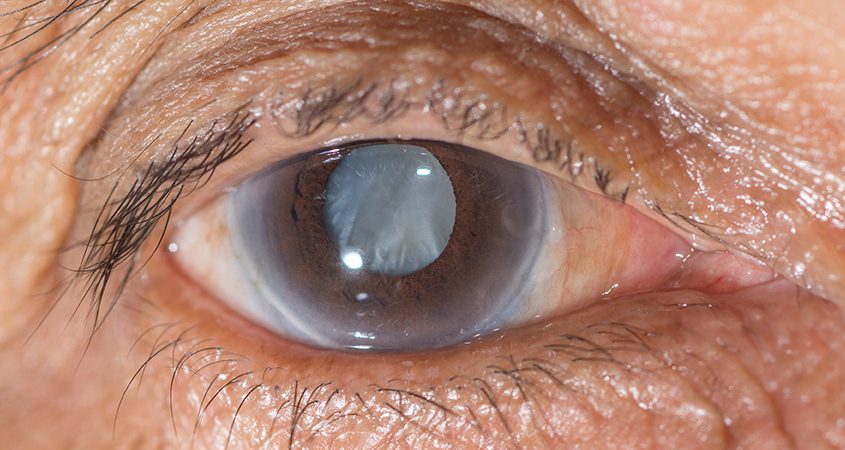How your eye works
When you look at something, light passes through the front of your eye, and is focused by your cornea and your lens onto the retina. Your lens is normally clear so that light can pass directly through to focus on your retina (the lens is clear because of the way the cells in the lens are arranged). Your lens focuses light onto the retina, which converts the light into electrical signals. A network of nerves delivers these signals from the different parts of your retina to the optic nerve and then onto your brain. Your brain interprets these signals to “see” the world around you. Your lens can change shape, allowing you to focus on objects at different distances, called “accommodation of vision”.
As you get older, your lens is unable to change shape as well as it used to; even people who can see clearly in the distance without glasses will need reading glasses to see things up close.

What is cataract
A Cataract is the name given to the natural lens inside the eye when it has become cloudy or less clear in appearance. A common misconception is that the cataract is like a “film” or “skin” that has grown over the eye, and this simply is not true. In actual fact, if you are suffering from a cataract, then the lens itself has gone cloudy and this can occur due to age, trauma, diabetes, or genetics to name a few causes.
The lens of the eye is normally transparent. If a cloudy area develops in the lens, it is called a cataract. This reduces the amount of light that passes through the lens resulting in vision that becomes increasingly poor.
Removal of a cataract is one of the most common surgical procedures performed in Australia. It has a high rate of success due to the modern methods used.
If the eye is otherwise healthy, the likelihood is that cataract surgery will restore good vision. If there is macular degeneration, glaucoma or diabetes, final vision may be limited by these conditions.
Of every 100 operations to remove a cataract, 99 will result in improved vision. Despite the benefits of modern cataract surgery, there are risks. These will be discussed later.
Causes and symptoms
Cataracts develop as a normal part of the ageing process. By the age of 60, about half of all adults will have some cataract formation.
The earliest symptoms can begin with glare and sensitivity to bright light. Later, as the cataract continues to worsen, haloes may appear around lights. Haloes are especially noticeable when driving at night: at the same time, night vision typically decreases. Vision typically becomes more blurred, hazy and foggy. Near vision (without glasses) can improve. Colours often become duller and darker.

